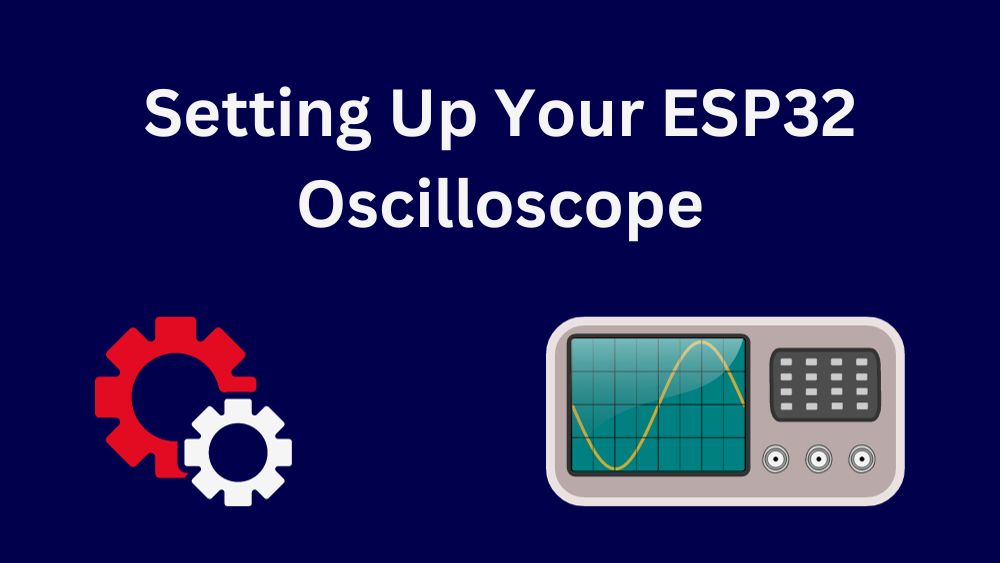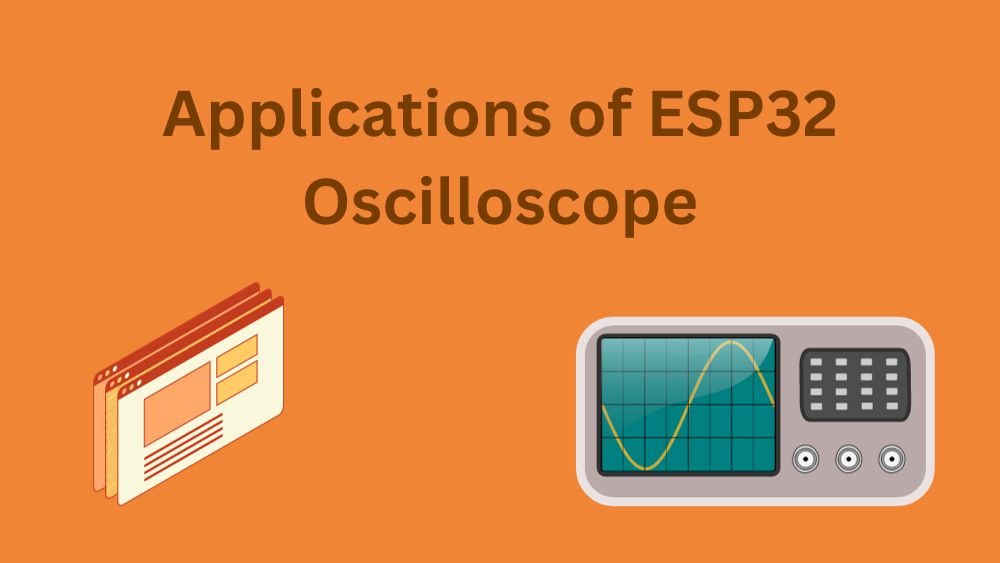Introduction
Today, we will take a deeper dive into one of the ESP32’s many intriguing applications: making it into an oscilloscope.
In this comprehensive guide, we’ll uncover all of the capabilities, applications and potential of an ESP32 oscilloscope.

What is an ESP32 Oscilloscope?
Understanding ESP32
To comprehend the concept of an ESP32 oscilloscope, let’s break it down:
ESP32 – The Powerhouse
The ESP32 is a powerful microcontroller developed by Espressif Systems. It’s renowned for its versatility, offering Wi-Fi and Bluetooth connectivity alongside a wide array of GPIO pins and capabilities.
Oscilloscope – The Visualizer
An oscilloscope is an indispensable tool for both engineers and hobbyists. Used to visualize electrical signals in time, oscilloscopes allow users to visualize electrical currents over time – making them great tools for troubleshooting circuits, analyzing waveforms, and more.
Merging the Two Worlds
An ESP32 oscilloscope cleverly marries the capabilities of an ESP32 with those of traditional oscilloscopes to open up an array of possibilities for applications spanning various sectors.
Setting Up Your ESP32 Oscilloscope

Hardware Requirements
Before you can start using your ESP32 as an oscilloscope, ensure you have the following:
- ESP32 Development Board: You’ll need an ESP32 development board, such as the ESP32-WROOM-32.
- Oscilloscope Probe: Invest in a good-quality oscilloscope probe for accurate signal measurement.
- Micro USB Cable: This is necessary for programming and powering your ESP32.
- Computer: You’ll need a computer to write code and upload it to your ESP32.
Software Setup
Now that you have the necessary hardware follow these steps to set up your ESP32 oscilloscope:
- Install the Arduino IDE: If you haven’t already, download and install the Arduino IDE on your computer.
- Add the ESP32 Board: Open the Arduino IDE, go to “File” > “Preferences,” and in the “Additional Boards Manager URLs” field, add the following URL: https://dl.espressif.com/dl/package_esp32_index.json. Then, navigate to “Tools” > “Board” > “Boards Manager” and install the ESP32 board.
- Select the ESP32 Board: In the Arduino IDE, select your ESP32 board from the “Tools” menu. Ensure you choose the correct variant and port.
- Install Required Libraries: Install libraries like the Adafruit GFX and Adafruit ILI9341 libraries for display functionality.
- Write the Code: Write or upload the code that will turn your ESP32 into an oscilloscope. This may involve configuring GPIO pins, setting up the display, and implementing signal measurement logic.
- Upload and Test: Upload the code to your ESP32 and test it with a signal source. You should see waveforms displayed on the screen.
Applications of ESP32 Oscilloscope

The versatility of the ESP32 oscilloscope lends itself to a wide range of applications:
- Educational Tool
- Electronics Education: Use it in classrooms or workshops to teach electronics and signal analysis.
- Prototyping and Development
- Rapid Prototyping: Quickly visualize and test circuit designs.
- IoT Device Development
- Sensor Data Visualization: Monitor and visualize data from IoT sensors.
- Audio Analysis
- Audio Signal Analysis: Analyze audio waveforms for music or speech.
- Home Automation
- Home Automation Projects: Use it for DIY home automation projects involving electrical signals.
Frequently Asked Questions (FAQs)
Q1: Can I use any ESP32 board for this project?
Yes, you can use various ESP32 boards like the ESP32-WROOM-32, ESP32-DevKitC, or others, depending on your specific requirements.
Q2: Do I need a dedicated power supply for the ESP32?
In most cases, the micro USB cable connected to your computer can power the ESP32 while programming and using it as an oscilloscope.
Q3: What’s the maximum frequency the ESP32 can handle?
The maximum frequency largely depends on the specific ESP32 board and the code you write. Typically, it can handle signals in the megahertz range.
Q4: Are there any limitations to using an ESP32 as an oscilloscope?
While it’s a versatile tool, an ESP32 oscilloscope may have limitations in terms of sample rate, memory, and display size compared to dedicated oscilloscopes.
Q5: Can I save and analyze captured waveforms?
Yes, you can implement functionality in your code to capture and save waveforms for later analysis.
Conclusion
The ESP32 oscilloscope is a remarkable fusion of modern microcontroller capabilities and the traditional functionality of an oscilloscope.
With the right hardware and software setup, it becomes a valuable tool for various applications, from education to prototyping and IoT development.
Whether you’re a seasoned engineer or an electronics enthusiast, harnessing the power of ESP32 as an oscilloscope opens up a world of possibilities for signal analysis and visualization.
So, grab your ESP32, follow our guide, and start exploring the exciting realm of ESP32 oscilloscopes today!
